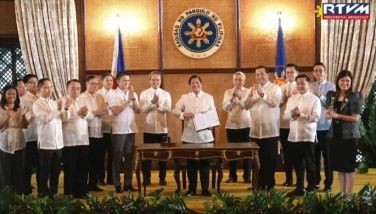To keep electricity cheap, Ka Leody bats for more renewables

MANILA, Philippines — A presidential candidate is batting for renewable energy to take on a more active role in shaping the country’s energy requirements in a bid to bring down sky-high power costs.
In a statement on Thursday, presidential aspirant Ka Leody de Guzman said renewable energy is the answer for increasingly expensive electricity around the country.
“The public and businesses always bemoan the rising costs of electricity. It is expensive simply because raw materials needed to produce it needs to be imported. That’s why it’s vulnerable to the price swings in the global market and the peso’s exchange rate against the dollar,” he said.
“Renewable energy comes from sunlight and the wind, which are all free. Many billionaires enrich themselves through dirty power sources that’s why they restrict the entry of cheap and clean technology into the energy sector,” de Guzman added.
The proposal comes at a time the world is embracing that carbon emissions need to be curbed or else risk hastening the progress of the climate crisis. Now, shifting to renewable energy sources will be a tall and expensive task for emerging economies, like the Philippines.
The Philippines, which recently banned the construction of new coal-powered generators, will need a decade or so before it could wean from its coal habit, as Fitch Solutions sees it. A government goal of powering the entire country by 2022 and the inevitable decline of the Malampaya gas field make it "impossible" for the Philippines to immediately kick its coal dependence, the Fitch unit said.
The national government is eyeing renewable energy to account for 35% of the energy mix by 2030, and supply half of the nation's energy needs by 2040.
As it stood, De Guzman’s blueprint for this transition begins with government support for solar panels. By 2030, the government forecasts solar to account for only 15.0% of the total power generation.
“The government should advocate renewable energy. It could require new buildings to have solar panels installed on top, which it could mandate in the Building Code. It could also compel Pag-IBIG, Social Security System and the Government Service Insurance System to lend households with low-interest loans for install solar panels in their homes. It should repair net metering so any excess electricity that these solar panels produce could be sold back to the national grid. Communities could also build microgrids,” he said.
- Latest
- Trending


























 Exclusive
Exclusive